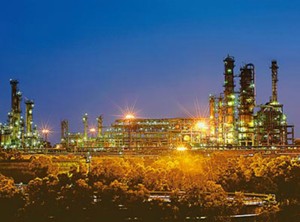India refiners outshine Asia peers with new output, rising local demand
SINGAPORE/NEW DELHI (Reuters) — Indian refiners are outperforming their competitors in South Korea and Thailand as they have ramped up output from new fuel and chemical capacities to meet rising domestic demand that could further lift their earnings over the next 2 yr.
Asia is adding net refining capacity of 360,000 bpd this year, according to Wood Mackenzie, with units coming online in China and Vietnam that could keep most of Asia well-supplied and weigh on refining margins for export-oriented refiners in South Korea and Thailand.
India, though, where refiners have already ramped up capacity that has come online, will likely be shielded from the pressure on margins by strong local demand, analysts said.
"Indian refiners are a bright spot in Asia because of rising fuel demand," Hindustan Petroleum Corp Ltd's Chairman M K Surana told Reuters.
Surana expects Indian demand growth of about 5% a year up to 2030 as a rising population and increasing affluence drive up oil use in the world's third-largest crude importer.
Indian oil minister Dharmendra Pradhan on Monday indicated a slower growth pace, but still said the country would consume 226 MMt (4.95 MMbpd) of refined products in fiscal year 2021/22, up from 205 MMt in 2017–2018.
"We expect India to lead global oil demand growth, contributing to one-third of the growth expected in 2017–2030," Goldman Sachs analysts told clients last week.
Indian refiners Bharat Petroleum Corp Ltd, HPCL and Reliance Industries could see their shares rising, with gains between 11% for Reliance and 25% for BPCL over the next year, the analysts said.
Among the refiners that have recently added capacity are BPCL, which is ramping up output after an expansion at its Kochi refinery, and Indian Oil Corp, which is planning to run its Paradip refinery at full capacity this year.
Indian oil refiners are being undervalued, the Goldman Sachs analysts said.
"Multiple re-rating could continue as investors give more credit for diminishing regulatory headwinds and sustainable earnings growth," the analysts said.
Regulatory changes in India that allow refiners to charge market rates for fuels, they said, have also improved the profitability at domestic refiners.
Analysts at Japanese investment bank Nomura said in July that their top investment recommendations for Asian refineries were IOC, BPCL and HPCL, "owing to refinery volume increase, deregulated petrol and diesel prices, and undemanding valuations."
In contrast, Goldman said added capacities across Asia could dampen gross refining margins. The bank expects Singapore complex refining margins to drop to $7.70 and $7.30 in 2018 and 2019, respectively, from $8 this year.
That means valuations for Asian refiners are stretched, it said, and recommended investors sell SK Innovation, owner of South Korea's largest refiner, S-Oil Corp, and Thailand's Thai Oil PCL and IRPC PCL.
With low oil prices helping to drive India's demand, though, and capacity additions slowing, its market is likely to remain snug, said Tushar Tarun Bansal, director at consultancy Ivy Global Energy.
"Only a few secondary units are expected to come onstream in the next five years," he said, while India's strong economic growth will continue to drive rising oil demand going forward.
Reporting by Florence Tan in SINGAPORE and Nidhi Verma in NEW DELHI; Editing by Tom Hogue
Related News
- Michelin, IFPEN and Axens announce successful progress in BioButterfly™ R&D project to produce biobased butadiene from bioethanol
- RCI, nova-Institut unveil new carbon label for products, intermediates and raw materials
- Methanol Reformer to supply Mitsubishi Gas Chemical with L18 methanol reformer technology







Comments